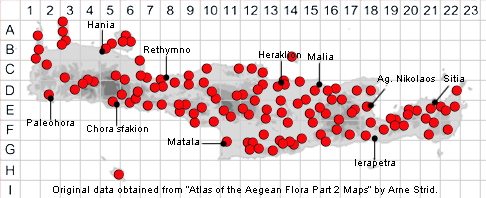SPECIES DESCRIPTION
ANEMONE HORTENSIS subsp. HELDREICHII
Family and Genus:- See- RANUNCULACEAE
Common Names:- None
Homotypic Synonyms:- Anemone stellata, Anemone stellata var. heldreichii.
Meaning:- Anemone (Gr) A name used by the Greek philosopher Theophrastus.
Possibly a corruption of the Semetic name Naaman for Adonis, from whose blood
sprung the crimson-flowered Anemone coronaria.
Hortensis (L) Cultivated, of the garden.
Heldreichii (L) After Theodor Heinrich Hermann von Heldreich (1822-
1902). Director of the Athens Botanical Garden.
General description:- Short to medium perennial.reaching on average 20-40 cm.
height.
Stem:-
1) Erect and somewhat tomentose.
Leaves:-
1) Basal, petiolate, 5-10 cm long palmate or with 3-5 toothed lobes,
a) outer basal, suborbicular in outline with primary segments divided less than
halfway into subentirer toothed lobes.
2) Cauline, linear-lanceolate, entire or rarely with 1-3 teeth.
Flowers:-
1) Solitary, fragrant and ranging in colour from white-bluish or mauve to red-purple,
3-6 cm. Æ. with numerous bluish or violet stamens and blue anthers.
2) Petals, 12-20 lanceolate, acute.
Key features:-
1) Stems, simple.
2) Cauline leaves, undivided or almost so.
3) Perianth-segments, 12-19, narrowly elliptical.
Habitat:- Dry open shrubby vegetation, open woodland and olive groves. 0-1000(-
1800) m.
Distribution:- Endemic; common in Crete, scattered in Karpathos and Kasos.
Flowering time:- (Dec-)Feb to early May.
Photos by:- Steve Lenton

